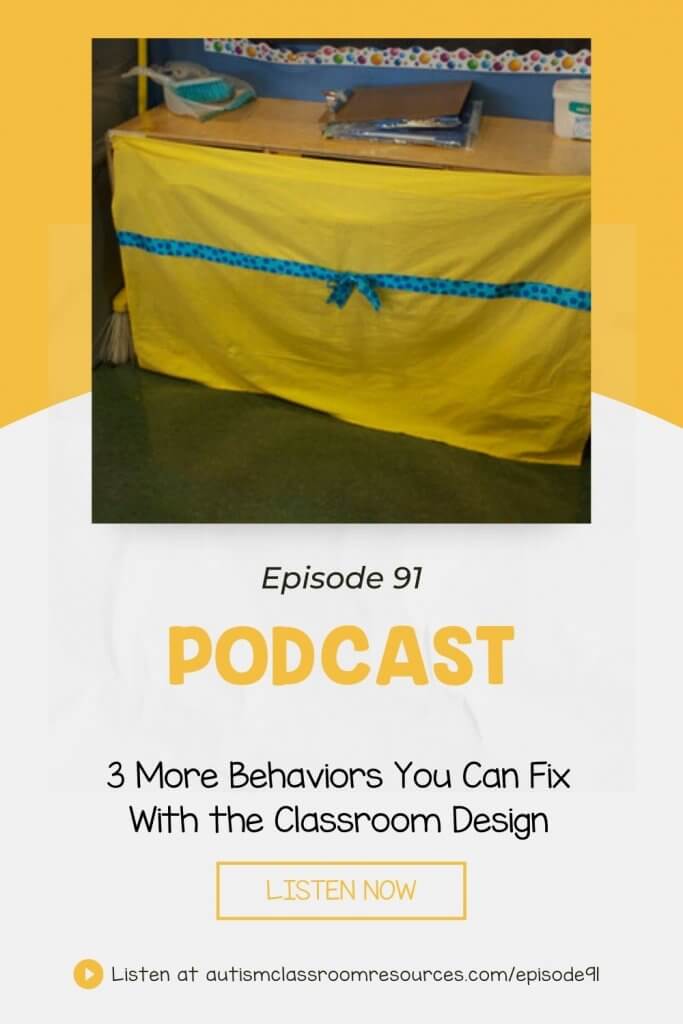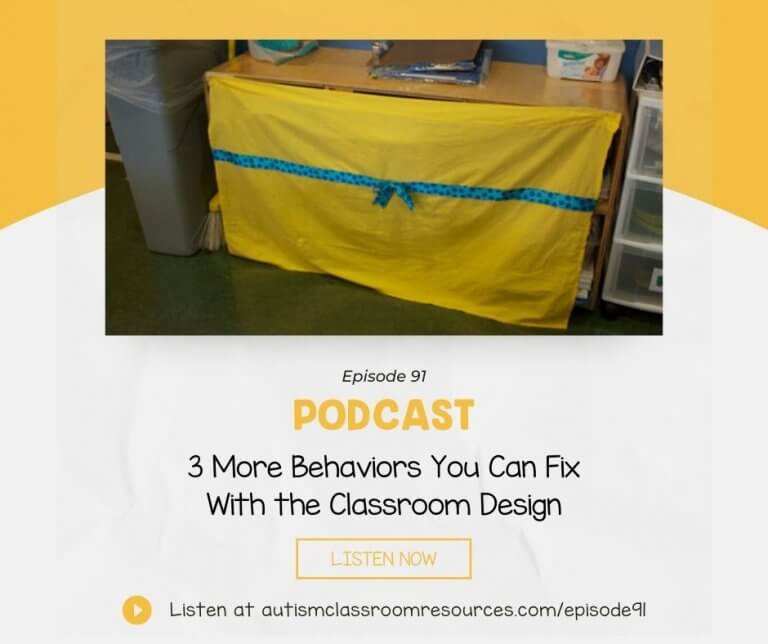Welcome to the Autism Classroom Resources Podcast, the podcast for special educators who are looking for personal and professional development.
Christine Reeve: I’m your host, Dr. Christine Reeve. For more than 20 years, I’ve worn lots of hats in special education but my real love is helping special educators like you. This podcast will give you tips and ways to implement research-based practices in a practical way in your classroom to make your job easier and more effective.
Welcome back to the Autism Classroom Resources Podcast. I’m Christine Reeve and I’m your host. Thank you for continuing on this journey of how to build your classroom to engage students and limit challenging behavior. We are at the troubleshooting phase. This week, I’m back with a snack-sized episode talking about two more behavioral concerns that indicate you need to change the physical design of your classroom. I’ve taken on these snack-sized episodes as a challenge similar to our five-minute video, lightning trainings in Special Educator Academy. I have to try to get them to five minutes or less, and so far I’ve done one and I’m close so let’s get started.
The first problem that I want to tackle today is students climbing on the furniture. Sometimes, just moving the furniture won’t solve the problem. If the student is crawling up the furniture and it’s simply a free standing shelf, for instance, then just moving it isn’t going to solve that problem. But often, students are climbing up the furniture or staying on it more easily because it’s next to a wall or another piece of furniture that support them or provide them something to balance against. First, look at where the furniture is that they’re climbing on and see if you had moved it, if it would be harder for them to climb on. Then yes, move it someplace else. You might also put something on top of the furniture to make it harder to walk on. Just make sure that that isn’t going to make it more dangerous than if it already is if he gets on it. You also might put something around it to block his access to it. That may be another way to change the physical environment to make it so that he won’t be able to get to it.
Next, if you have, as I have had in the past, a student who can walk on top of the furniture around the room, you need to move your furniture so it isn’t as close together. I had a student who could pretty much walk the perimeter of the classroom on top of the furniture. Moving the furniture so it wasn’t so close together was our first step to prevent the behavior from happening. Our next step was functional behavior assessment to determine that the behavior was motivated by gaining attention and then putting in place a comprehensive behavior plan. Never forget that step. Changing the environment is an antecedent or preventive strategy but there are other pieces that need to be put in place as well.
Next, students are dumping materials off shelves or tables regularly. This is always a fun one and it’s tempting to put all the materials away and strip down your classroom. But that doesn’t really make it a very pleasant place for anyone to be in. Instead, try covering the shelves with curtains or sheets to put the materials that are not being used out of sight. It is really amazing how much out of sight is out of mind for many students. It won’t help everybody but it’s worth a try.
Another solution is to make sure that the materials on the tables are only the materials needed for this activity. There isn’t much of a need in our classrooms to use tables as display areas for unrelated materials, and if you’re still having problems with the student grabbing materials off the table, keep the materials that are needed for the activity in closed bins next to the teacher’s chair at the activity to prevent them from being able to access them easily. Again, remember that we do have to follow up with teaching the students replacement behaviors for these behaviors as well.
Those are some common issues that I’ve dealt with frequently in troubleshooting the design of the classroom. If you have questions about classroom design or troubleshooting, things like this, hop over to the free Facebook group and share them at specialeducatorsconnection.com. If you’re looking for more individualized help and support in setting up and working with students with disabilities, come try seven days free at the Special Educator Academy. We are a training and support site that has tons of resources for teachers just like you. Finally, you can grab a transcript and links for the post at autismclassroomresources.com/episode91.
Thanks so much for listening. I hope that you’ll come back next week for another snack-size episode about visual cues that can address common behavioral concerns. Until then, I will just be sitting here trying to invent furniture for classrooms that is climbing proof.







